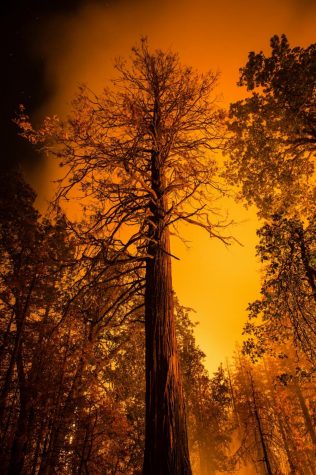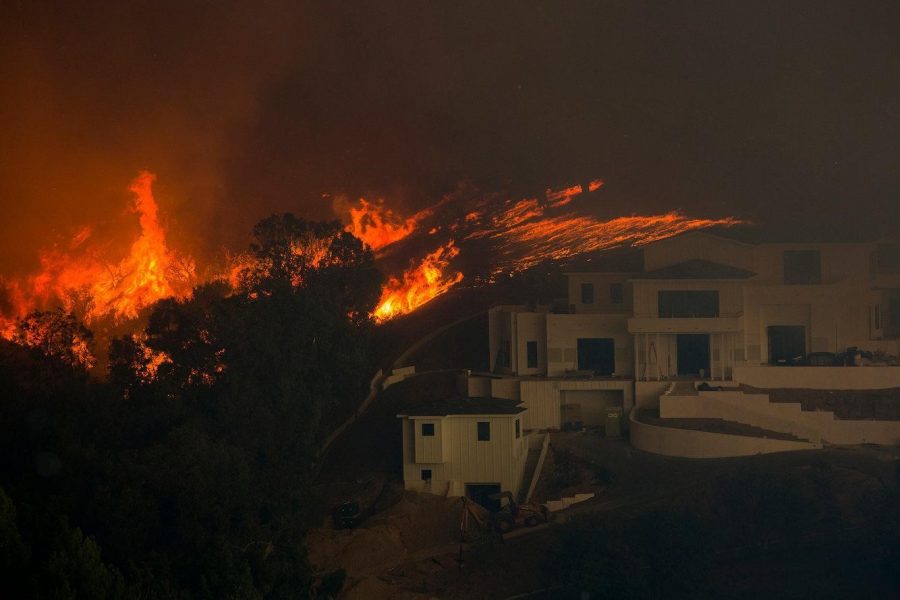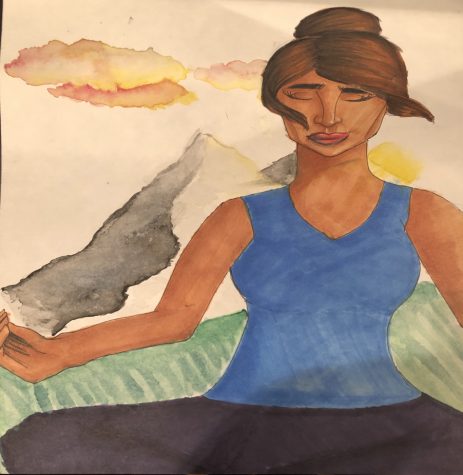California Fires
December 20, 2018
The three major forest fires that raged across California last month are some of the most destructive in the state’s history, causing deaths, evacuations, and destruction like the state has never seen. The Camp Fire, which broke out north of the city of Sacramento, officially became the deadliest fire in the California history on November 13, when the death count rose to a total of 44 victims. Additionally, as of December 3, the Woolsey fire, which burned in the Los Angeles and Ventura counties, destroyed 670 structures in Malibu. This was an estimated $1.6 billion dollars of damage. Thousands of people faced panic and uncertainty regarding the evacuation of their community and fires, including Thousand Oaks resident Megan Doyle, sister of Burroughs English teacher Maggie Doyle Ervin. Doyle recounted her evacuation from the fires as challenging and dangerous.
 “We realized that we were sandwiched between the two fires and there was only one highway still open that would allow us to get out of the area,” Doyle said. “So we woke up our kids at midnight and put them in the car and left, driving through heavy smoke … until we could find a hotel with a room available.”
“We realized that we were sandwiched between the two fires and there was only one highway still open that would allow us to get out of the area,” Doyle said. “So we woke up our kids at midnight and put them in the car and left, driving through heavy smoke … until we could find a hotel with a room available.”
Doyle continued, “We essentially waited, watching Twitter and local government emergency websites constantly for an evacuation order. We went to sleep assuming we may get woken during the night with an evacuation alert or firefighters knocking on our door.”
When the evacuation order finally came, thousands of cars were crammed onto Highway 101, the only escape route.
The fires also have been incredibly damaging to the environment, especially considering California’s history of being prone natural disasters due to its dry climate. When asked to compare the fires of 2018 with others in the recent past, Doyle explained that, to her, the Woolsey fire was especially devastating.
“[It] virtually destroyed the entire Santa Monica Mountains national park … People hike there, they bike there, our kids do field trips there, and it is essentially all gone,” Doyle said.
Even in the areas miles away from the fires, residents still felt the impacts of the environmental disorder in their daily lives. Burroughs alumnus William Howlett (’18), who lives in Palo Alto as a student at Stanford University, described his community’s reaction to the fire, explaining that they all tried to stay indoors as much as possible, for the smoky air was too difficult to breathe in.
“A lot of people wore masks outside to make it easier to breathe,” Howlett said.
If there exists a silver lining among the massive chaos and damage, it is that the community has come together to support each other and the environment as much as they possibly can.
“The community has been amazing in its reaction to the fires,” Doyle said. “It has come together in a way that is both moving and cathartic.”
Doyle detailed benefits and fundraisers for victims of the fire and explained how the community showed its appreciation for the first responders and all for all that was salvaged. Rather than simply waiting, residents are reacting to the fire and making a difference for the better in their communities.
Describing one particularly striking image, she explained, “At our schools, kids have made banners to hang outside the building that say, ‘We are safe. We are strong. We are thankful.’”








